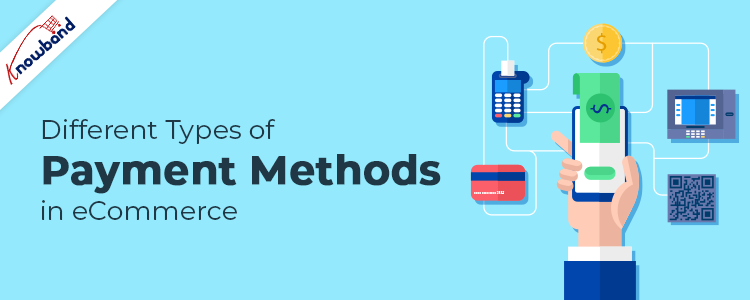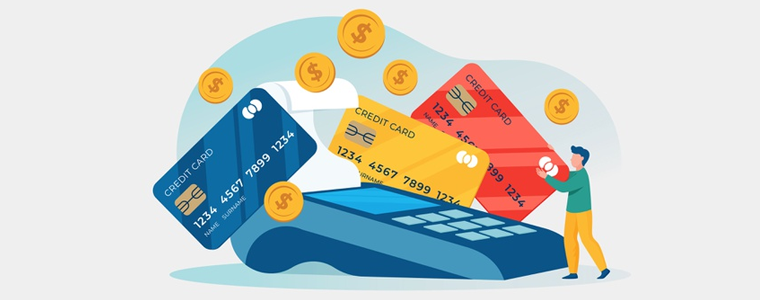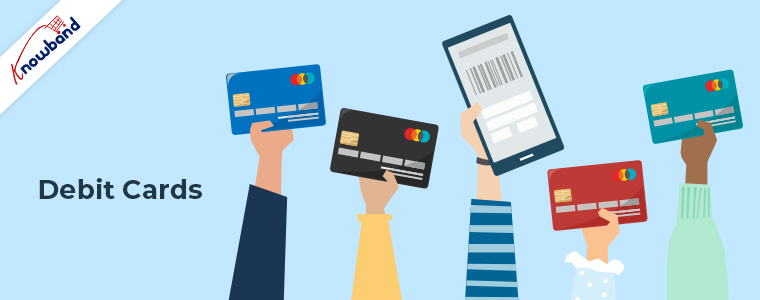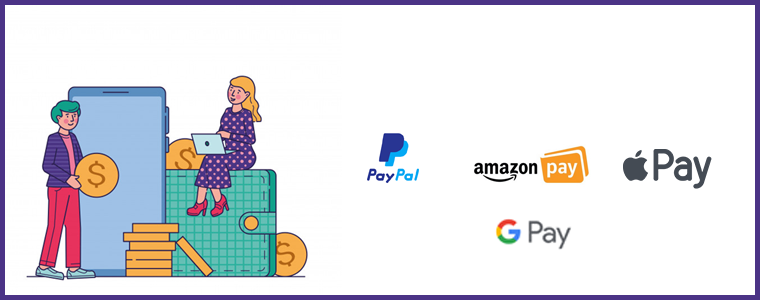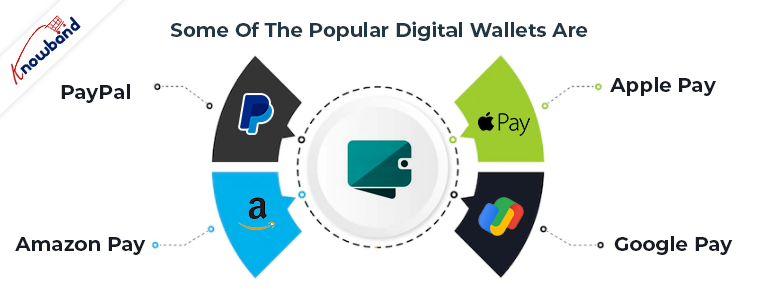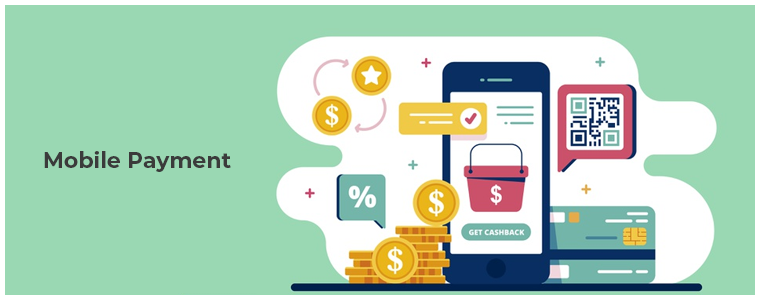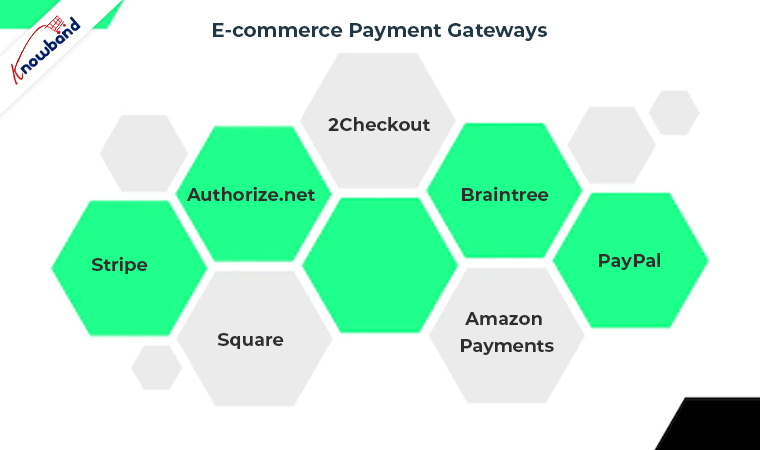Any type of payment that is done online using an electronic medium is what we call as an eCommerce payment system or online payment system.
When starting your online business, it is important to know what kind of payment options you are going to set up on your website/store.
You will have a number of options to choose from, but what’s suited best for your business, for your region, what are the trending payment options, is where you will have to smartly consider your choice.
Today, customers also demand multiple payment options on an eCommerce website so that they can choose their desired payment mode.
Let’s take a look at the different types of payment methods in eCommerce. The list will consider some popular eCommerce payment system (apart from COD) and help you in identifying what would be ideal for your business.
1. Credit Cards
Credit Card is the most popular form of online transactions and is considered a global payment solution.
It is the default payment option on a majority of eCommerce websites. Besides, it is very convenient. A customer just needs to enter some card details like the card number, card expiry date and the card verification value; abbreviated as CVV.
This payment option is supported by every eCommerce platform.
2. Debit Cards
Similar to Credit Card, Debit Card is also a widely accepted online payment method and highly popular in India. This payment mode is ideal for those customers who prefer to spend within their financial limits.
A debit card allows customers to pay with their saved money in their bank account, unlike a credit card where the amount is billed and need to be paid at the end of the billing cycle.
3. Netbanking
Netbanking, also referred to as Internet Banking and Online Banking, is also amongst the widely used eCommerce payment methods.
The process of payment is similar to a debit card where the amount debits instantly from the customer’s bank account.
The only difference is that the customers do not require entering their card details. They just need to register for the netbanking facility with their bank.
Once registered, they can choose the netbanking option on the payment page and make the payment by specifying the netbanking id/customer id and the pin.
4. Digital Wallets
Digital wallets or e-wallets allow customers to pay without having to carry their card. A customer just needs to link his/her bank account to the e-wallet once, following which the details are stored and remain secure inside that wallet.
This eliminates the need to enter the card details every single time, hence encouraging a quick checkout. Some of the popular digital wallets are-
A. PayPal
Having nearly 325 million active accounts worldwide as of the first quarter of 2020, PayPal is one of the biggest digital wallets. It is reported that over 17 million businesses have integrated PayPal on their payment page and has over 80% higher conversion rate than other digital wallets.
B. Amazon Pay
Amazon launched its own online payment service called Amazon Pay to compete against the other digital wallets. This allows Amazon customers to pay on the platform using the Amazon pay wallet.
Many offline and online merchants have linked their business with Amazon Pay.
C. Apple Pay
Similar to Amazon Pay, Apple also has its own payment portal called Apple Pay that allows iOS users to conduct transactions on eCommerce websites accepting Apple Pay.
There were approximately 441 million Apple Pay users worldwide as of September 2019, reports Statista.
D. Google Pay
Another online payment and digital wallet in the competition race is Google Pay. It is expected to cross the 100 million users mark in 2020.
Google Pay is a highly secure and convenient online payment platform with some exciting rewards for both the merchants and customers on transactions.
5. Mobile Payment
Mobile payment offers an easy and quick solution for customers to make a payment via their smartphones. All a customer needs is a mobile payment app, like Paytm which can be downloaded from the play store.
After that, they need to link their bank account with that app, following which they can add money to their wallet and pay, or make the payment directly from their bank account.
When a customer chooses to pay using that app on an eCommerce website, a payment request is sent to that app after approval of which, the payment is made.
E-commerce Payment Gateways
To make these payment methods work, you will have to set up some eCommerce payment gateways on your website.
A payment gateway is required to process the online transactions, i.e. allowing merchants to accept payments on their platform.
Some of the best eCommerce payment gateways are-
1. Stripe
2. PayPal
3. Authorize.net
4. Square
5. 2Checkout
6. Braintree
7. Amazon Payments
The more payment options you have on your website, the more comfortable customers feel while checking out. Besides, the cart abandonment rate also drops by a significant margin.
And with the popularity of mobile apps, mobile payments and the role of digital wallets becomes vital.
We, at Knowband, offer the One Page Checkout module and the Mobile App Builder that allow you to integrate multiple eCommerce payment methods on the website as well as the mobile app.
Know more about One page checkout here:
The list of the supported payment methods includes PayPal, Advanced Paypal, Authorize.net, Boleto, PayU, Stripe, Sage Pay, Mobilpay, Ogone, Pago Facil, ePay, ccAvenue, Quickpay, Firstdata, Paysera, Braintree, Moneybookers, Mercado Pago, Redsys, 2Checkout.
Final Thoughts
The list of eCommerce payment methods is long. Find out which are beneficial for your business and then integrate them on your website.
Having multiple payment options on your checkout page is a great away to boost your eCommerce sales.
For any assistance regarding the module, you can contact us at support@knowband.com

